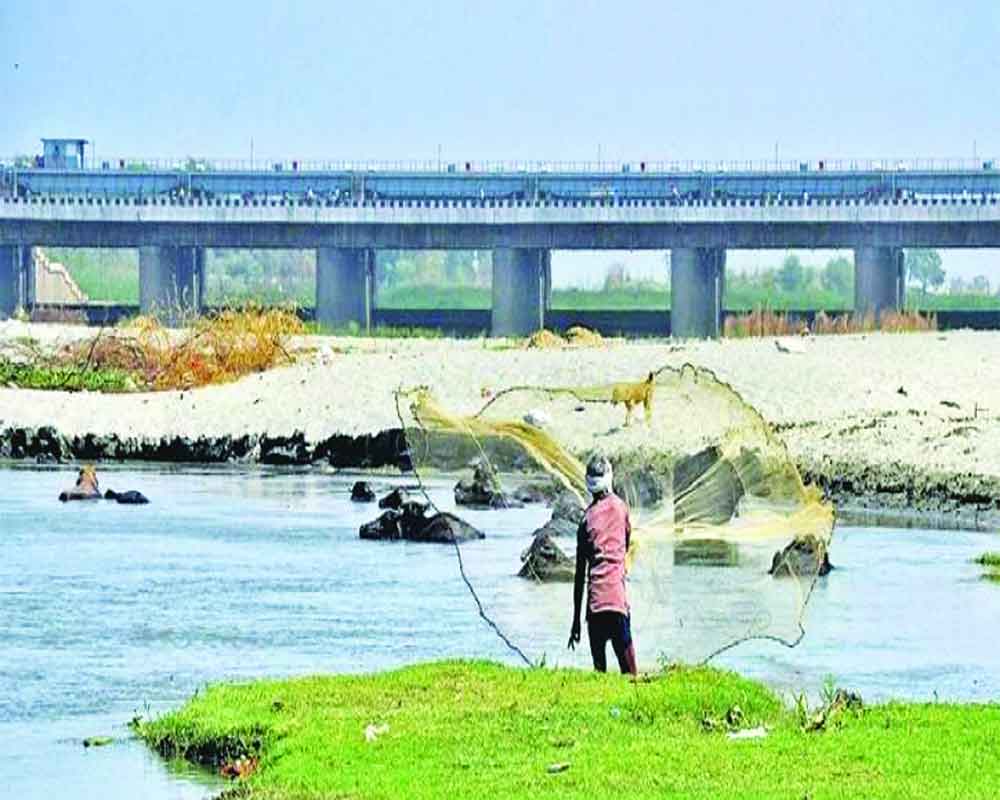The green nod for the Yamuna flood plain project is the first step to reverse the countdown to Day Zero
With the NITI Aayog predicting Day Zero for 21 Indian cities, the National Green Tribunal’s (NGT’s) clearance of the ambitious Yamuna flood plain natural water storage project has come as a gulp of survival. This certainly will go a long way in resolving Delhi’s water woes and perhaps lay the urban template for other riverine cities to build reserves for the future. What the Arvind Kejriwal-led government aims to do is encourage rainwater harvesting by digging small ponds along the Yamuna flood plains, which in turn will become natural receptacles of accumulated rainfall and the overflowing river. This infusion of water, which would otherwise trickle out as runoff or waste, will now recharge the river bed and groundwater tables. Sixty per cent of the water supplied by the Delhi Jal Board comes from the Yamuna, around 34 per cent from the Ganga and the rest from groundwater. So this project is expected to directly impact volumes. Significantly, this green nod exemplifies a remarkable bipartisan approach to a common concern as Union Jal Shakti minister Gajendra Singh Shekhawat speeded up processes. The conservation project will run along 22 km of the Yamuna flood plains, beginning at Palla, where the river enters Delhi, to the other end in Wazirabad. Of course, there is still another hurdle, of acquiring land from farmers, with the Delhi government planning to rent it at a rate of Rs 77,000 per acre. Question is whether the farmers, who have been growing seasonal crops here and living on it for years, will give up their rights for an annual rent? That needs practical workarounds. But at least a beginning has been made. A river’s flood plain must be excluded from human habitation and just allowed to be as it absorbs the most water that recharges aquifers. But as Delhi went through an infrastructural overhaul over the decades, the sustainability of the development process was compromised in the name of erecting modern monuments to the city’s pride, namely the Akshardham temple and Commonwealth Games Village that completely dried out the groundwater and blocked percolation. The bells had tolled way back then, its gong is being heard now.
A fact profile of Delhi, despite being situated on the banks of the Yamuna, reveals a glaring crisis. About 18 per cent of its population does not have piped water. Yet, it has one of the highest percentages of households with piped water in India. The only way we can make good the deficit is by replicating rainwater harvesting models across the city, beginning with what history has gifted us, a series of baolis or wells that need recharging, besides lakes, pavilions and moats. The city has lost at least 200 natural water bodies due to encroachment and reclamation, illegal and even legal ones with the connivance of a multiplicity of local authorities and land developers. This is also the reason that a horribly silted up city today gets deluged by the slightest shower. Existing water bodies lie in utter neglect, filled with sewage, garbage and effluents, and are unfit for use. While the groundwater levels have kept falling with the city’s growth, the increasing number of bore-wells and tube-wells has been vacuumising the deeper aquifers as well, causing all kinds of slurry and trickling toxic sludge to be sucked in. India is the world’s largest user of groundwater, drawing one-fourth of the global reserves every year, and it is time the government clamps down on overdrawal with some kind of rationing permits. Also, though rainwater harvesting is compulsory on paper, there are no compliance checks or implementation. This has now got to be enforced on a war footing at the community level. The biggest problem is with builders who tout rainwater pits as a virtue to get sanctions for their housing societies but never install systems. Complementary water-saving measures need to be looked at too, like planting native tree species to strengthen the city’s catchment area, recycling water and ensuring compliance of zoning residential and commercial use norms. One also needs to create a water map to assess requirements across localities and rationing supplies accordingly.


























